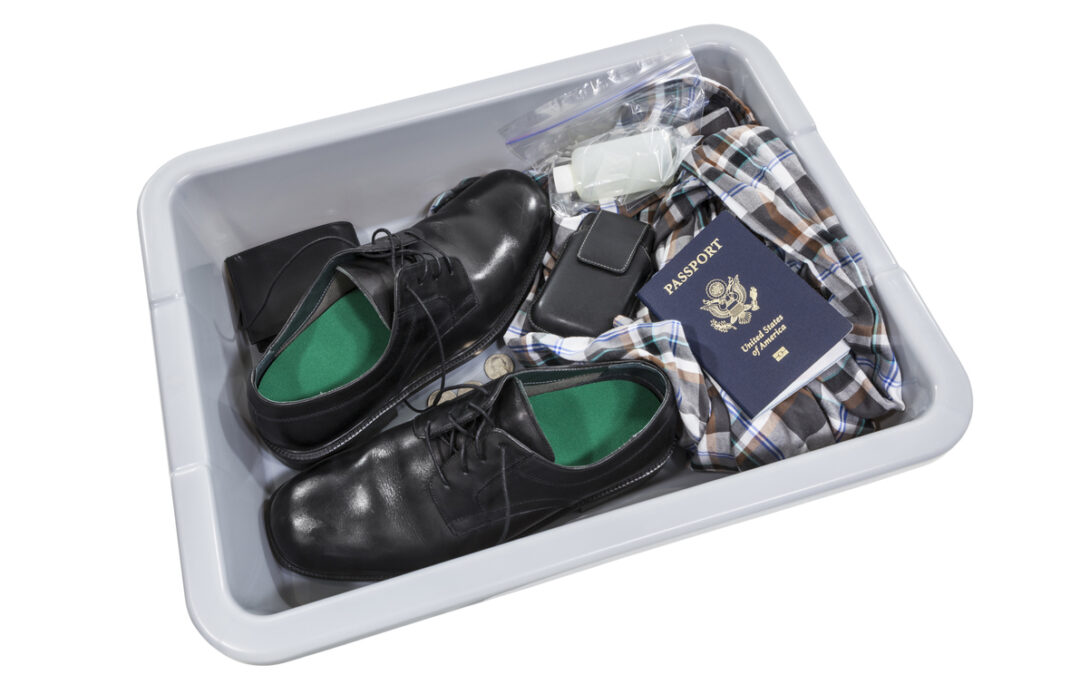The Origin of the Shoe Removal Policy
On December 22, 2001, Richard Reid attempted to detonate a bomb concealed in his shoe on an American Airlines flight from Paris to Miami. An alert flight attendant and several passengers managed to prevent the bombing, but the incident changed aviation security for decades to come.
Reid’s attempt eventually led to the implementation of a policy in 2006 requiring passengers to remove their shoes at security checkpoints and place them through the X-ray machine. This was necessary because the walk-through metal detectors in use at the time could not detect explosives or other prohibited items near floor level.
Although this vulnerability had been known since at least the 1980s—when I briefly worked as a screener for a private security contractor—it had not (as far as we know) been exploited in the U.S. until Reid’s attack.
TSA’s Policy Reversal
On July 8, TSA announced it would be ending the shoe removal requirement. While PreCheck passengers have long been allowed to leave their shoes on, the new policy would expand this to all passengers. The rationale? Speculation suggests that TSA is reevaluating the entire screening experience and that current technologies may be sufficient to detect threats without requiring shoe removal.
Political Pressure and Security Risks
There may be another, more concerning motivation at play: political pressure to reduce the intrusiveness of TSA procedures. Some members of Congress have even introduced legislation to abolish the TSA altogether, motivated by nostalgia for the pre-9/11 era of minimal (and largely ineffective) security. But that approach contributed to the vulnerabilities that made the 9/11 attacks possible.
(For the record, I’m not a fan of some of the TSA procedures either—but I do like arriving safely at my destination.)
Security policies should never be altered for political reasons. Any changes to aviation security must be based on:
- Current threat assessments and intelligence
- The effectiveness of available security technologies and procedures
- Frequent audits and performance reviews
Do We Still Need to Remove Shoes?
Let’s set politics aside and evaluate the merits of the shoe policy itself.
In the late 2000s and early 2010s, the U.S. began deploying body imaging technologies to replace standard magnetometers. These installations continued into the 2020s, with more than 900 scanners placed at large, medium, and small airports. However, some very small airports still use magnetometers, which could represent a security gap.
While modern magnetometers can detect metallic items at floor level, they still cannot detect plastics, liquids, or ceramics—the very types of materials improvised explosive devices are made of. Also, I’m not giving away any secrets here. Anyone with a web browser and internet connection can learn about the strengths and weaknesses of these systems.
Millimeter wave imaging machines are far more capable, offering the ability to detect explosives and prohibited items at ground level. But no technology is perfect—false negatives and false positives are part of every detection system. The question becomes: Are we comfortable with the level of risk that remains?
Scanner Limitations
A 2019 Department of Homeland Security research program emphasized that a shoe’s size, material, soles, and heels can significantly impact scanner effectiveness. Boots, especially those with thick soles or dense materials, can interfere with the scanner’s ability to detect concealed items within the shoe’s structure. These blind spots might allow contraband to pass through undetected unless further inspected.
That’s why it’s critical that TSA continues to apply random screening procedures—especially for passengers wearing footwear that poses detection challenges. Without random checks, the “keep your shoes on” policy introduces another potential weakness—particularly at airports still using legacy equipment.
Striking the Right Balance
Ultimately, the question remains: Will ending the shoe removal policy weaken our security posture? Or is it a reasonable shift toward improving passenger experience without sacrificing safety?
Any reduction in security layers introduces risk. However, airport security is ultimately about balance—providing a reasonable level of detection and deterrence while allowing the flow of air commerce to continue unimpeded.
Let’s just make sure that balance is driven by risk-based decision-making, not political convenience.
What’s Next? The Liquid Rule?
Will the liquid rule be next on the chopping block? That’s a different story.
While the newer Computed Tomography (CT) scanners can detect liquid-based explosives, it may take another decade or more before these machines are deployed at all U.S. airports. Until then, the 3-1-1 rule is likely to remain in effect at most locations—meaning passengers will continue pouring out their water bottles at checkpoints for years to come.

